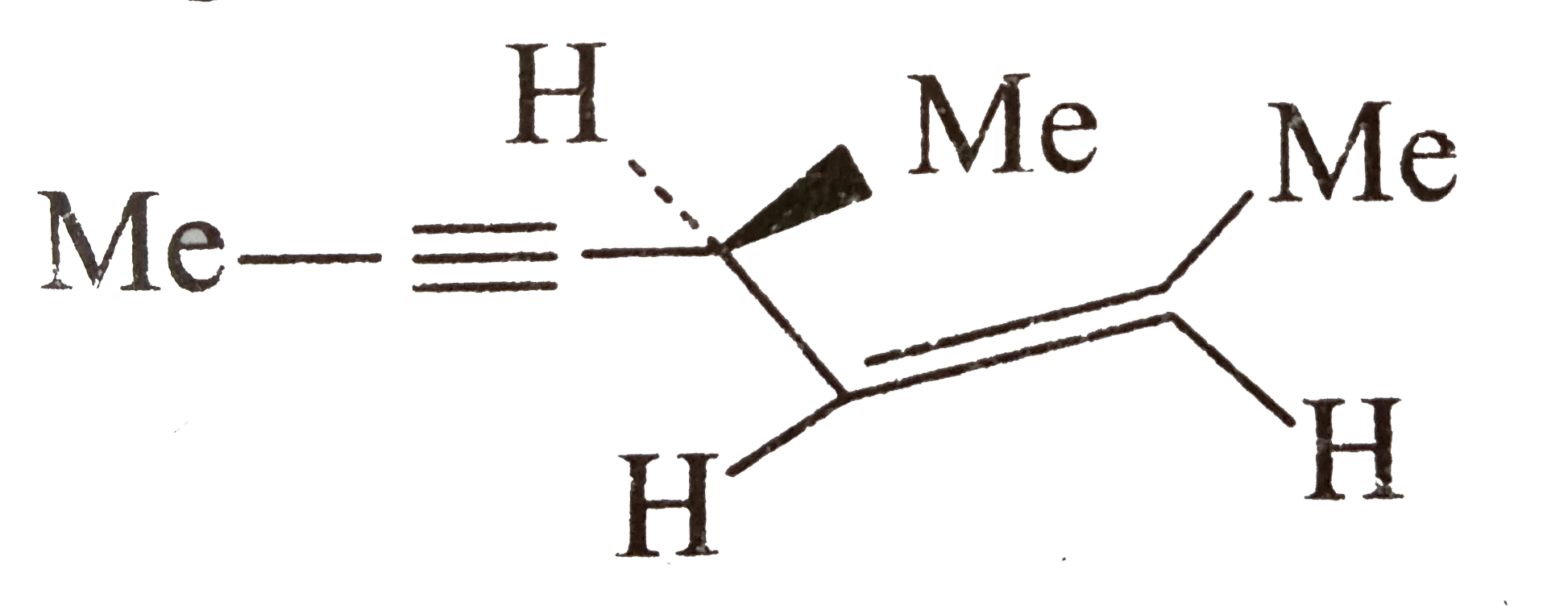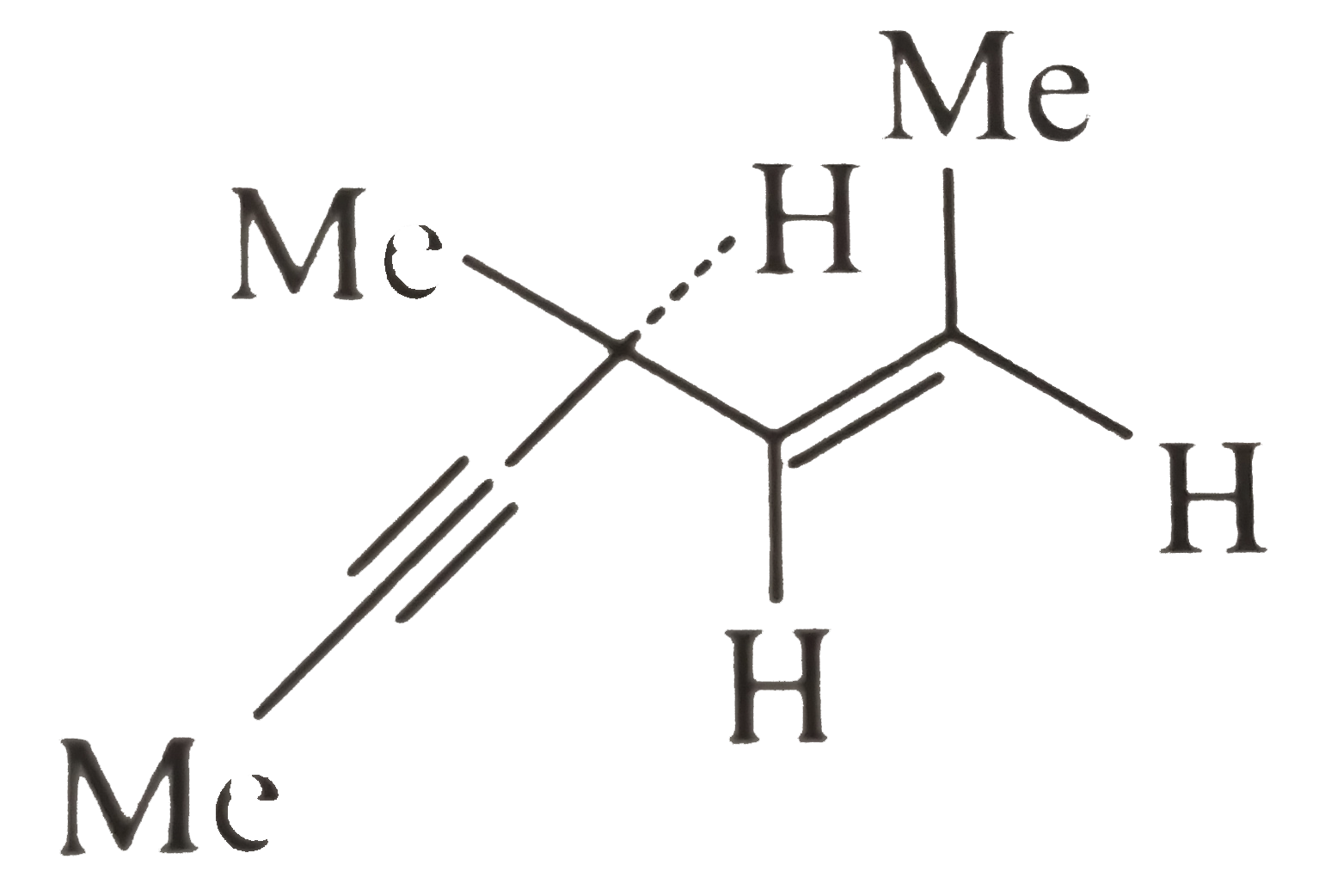Hydrogenation of the compound

with H2 in the presence of Lindle catayst gives
an optically inactive compound
an optically active compound
a diasteromeric mixture
a racemic mixture
The correct Answer is:A

In the above compound C−4 is chiral, its chirality is lost during the syn addition of H2 in the presence of Lindlar's catayst. Due to the presence of plane of symmetry, the product is optically inactive.
Topper's Solved these Questions
- STEREOCHEMISTRYBook:R SHARMAChapter:STEREOCHEMISTRYExercise:Archives
Explore 17 Videos
- STEREOCHEMISTRYBook:R SHARMAChapter:STEREOCHEMISTRYExercise:Level III
Explore 25 Videos
- SOLUTIONSBook:R SHARMAChapter:SOLUTIONSExercise:ARCHIVES
Explore 42 Videos
- SURFACE CHEMISTRYBook:R SHARMAChapter:SURFACE CHEMISTRYExercise:Archives
Explore 18 Videos
Similar Questions
Knowledge Check

Hydrogenation of the above compound in the presence of poisoned Pd catalyst gives:AAn optically active compoundBAn optically inactive compoundCA racemic mixtureDA diasteromeric mixture Hydrogenation of the above compound in the presence of sodium in liquid ammonia gives - AAn optically active compoundBAn optically inactive compoundCA racemic mixtureDA diastereomeric mixture
Hydrogenation of the above compound in the presence of sodium in liquid ammonia gives - AAn optically active compoundBAn optically inactive compoundCA racemic mixtureDA diastereomeric mixtureHydrogenation of the adjoining compound in the presence of poisoned palladium catalyst gives.
 Aan optically active compoundBan optically inactive compoundCa racemic mixtureDa diastereomeric mixture
Aan optically active compoundBan optically inactive compoundCa racemic mixtureDa diastereomeric mixture
Hydrogenation of the adjoining compound in the presence of poisoned palladium catalyst gives

View SolutionCompound (A)(C8H12) on oxidation gives an acid B(C4H6O2). One mole of compound (A) reacts with 3mol of H2 in the presence of Pt catalyst to give octane. Identify compound (A).
View Solutiona) Compound (A) C8H12 on oxidation gives an acid (B) C4H6O2. One molecule of compound (A) reacts with 3 mole of H2 in presence of platinum catalyst to give octane. Identify compound (A).

View SolutionHydrogenation of the following compound in the presence of poisoned palladium catalyst gives

View SolutionReduction of acetyl chloride with H2 in presence of Pd gives
View Solution



